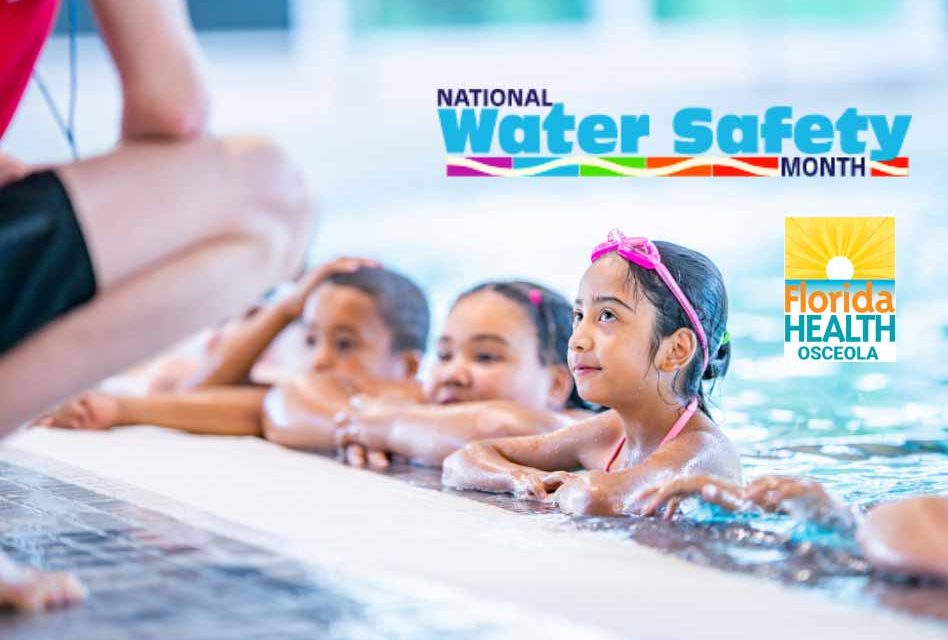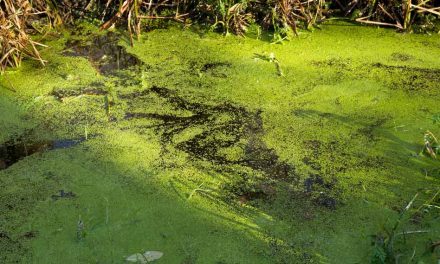May is National Water Safety Month, a time when Central Florida county health departments, like the Florida Department of Health in Osceola, encourage communities to participate in water and sun safety and take precautions to prevent drownings and skin damage. Central Florida county health departments serving Osceola, Brevard, Flagler, Lake, Orange, Seminole, and Volusia counties recognize the importance of National Water Safety Month.
|
With pools, lakes, and other surrounding bodies of water in Florida, water safety is key to prevent drownings. Children ages 1 – 4 are more likely to drown in a home swimming pool, compared to children ages 5 – 19 who are more likely to drown in natural bodies of water. Whether you are a parent or a community group member, everyone plays a role in drowning prevention. The goal is to keep water activities fun and safe for all as we move into the summer months. Here are a few water safety tips provided by WaterSmartFL.
Tips on Water Safety:
• Supervision : L earn to make water safety a priority, ensure that your family members are knowledgeable around the water, assign a “water watcher,” by having a responsible adult around to actively watch when a child or adult is in or around the water.
• Barriers : A child should never enter the pool area unaccompanied. Barriers including gates, fences, walls, doors, and windows are recommended to aid in the assistance and protection of those who are at risk.
• Emergency Preparedness : I n an emergency, it is critical to have a phone nearby to call 911 if needed. Know your location and know what type of emergency you are calling about. CPR and First Aid are also important to know.
Beach and Lake Swimming
Swimming in open water is much different than swimming in a pool , but most people are not aware of how different they are. Even the strongest swimmer can get into trouble swimming in open water.
Here are some tips and other layer s of protection when swimming at the beach or lake:
Swim It : Always swim with a buddy and when safety flags and signs give it the all – clear to do so!
Shore It : If you have a cut on your skin or if your immune system is weakened, or you don’t have a buddy to swim with, stay on dry land.
Dodge It : If you encounter animals that live near or in the water, stay away, also stay clear from red tides and algal blooms like blue – green algae. This can cause skin irritation, burning eyes, and throat, and breathing irritations. Florida Fish and Wildlife Conservation Commission posts the status of red tide locations and the Florida Department of Environmental Protection monitors blue – green algae.
For more information visit: https://www.youtube.com/watch?v=W7Rp757hv88
Protect Your Skin: According to the Centers for Disease Control and Prevention (CDC), skin cancer is the most common cancer in the U.S. Most skin cancers are caused by exposure to ultraviolet rays from the sun, and we all know Florida has plenty of it. The best way to protect skin is to cover up with sunscreen, shade, and clothing. The Florida Department of Health (FDOH) recommends using sunscreen with a UVA/UVB SPF 15 or higher. Sunscreen is most effective when reapplied every two hours. Taking breaks from the sun is also recommended, step into the shade throughout the day. The sun’s rays are strongest between 10 am and 4 pm, and it’s important to limit sun exposure during this time. Lastly, wear clothing that covers exposed skin. Wear clothing that is lightweight and loose – fitting that covers your arms and legs. Swim shirts are also advised as they block out 98 percent of the sun’s harmful rays. The CDC also recommends wearing a hat with a wide brim to shade your face, head, ears, and ne ck, and wearing sunglasses that wrap around and block both UVA and UVB rays.
For more information on National Water Safety Month, visit: https://www.floridahealth.gov/programs-and-services/prevention/drowning-prevention/index.html, www.watersmartfl.com, https://www.cdc.gov/cancer/skin/index.htm, and https://www.cdc.gov/cancer/skin/basic_info/sun-safety.htm , https://nwsm.phta.org/




















